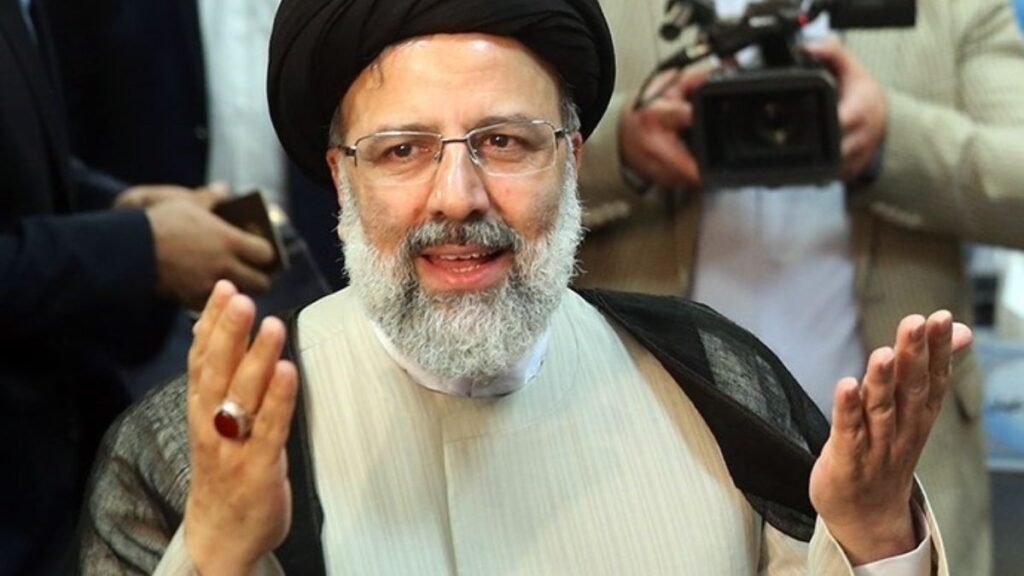Iranian president Ebrahim Raisi and foreign minister Hossein Amirabdollahian have died in a helicopter crash, an Iranian official told Reuters.
“To Allah we belong and to Him we shall return…” Iran’s vice president Mohsen Mansouri has also confirmed Ebrahim Raisi death.
Following the death of president Ebrahim Raisi, Iran’s vice president Muhammad Mukhbar will assume the role of acting president, pending approval from the Supreme Leader.
The news about Raisi’s demise comes a day after a helicopter carrying him and his Foreign Minister crashed. The wreckage was found on Monday by rescuers and the local media had earlier reported that “no sign of life’ were found at the crash site.
More than twelve hours later, rescuers found the wreckage of the helicopter about two kilometers away. The incident occurred near Jolfa, a town on the border with Azerbaijan, about 600 kilometers (375 miles) northwest of the Iranian capital, Tehran. Raisi was reportedly returning from neighboring Azerbaijan.
Nine people were onboard the helicopter including Iranian President Ebrahim Raisi, Iranian Foreign Minister Hossein Amir Abdollahian, Governor of East Azerbaijan Province Malek Rahmati, Tabriz’s Friday prayer Imam Mohammad Ali Alehashem, a pilot, copilot, crew chief, head of security, and another bodyguard.
Ebrahim Raisi, 63, had long been considered the natural successor to Supreme Leader Ayatollah Ali Khamenei, Iran’s highest authority.
Raisi, a hardline and religiously conservative politician, had a well-established presence with close ties to the judiciary and the religious elite. In 2017, he ran for the presidency for the first time but failed. He was finally elected in 2021.
Ebrahim Raisi’s early years
Raisi started studying at the prestigious religious seminary of Qom when he was 15 years old and later studied under several Muslim scholars of the time.
When he was in his early 20s, he was appointed prosecutor in several cities until he moved to the capital, Tehran, and worked as a deputy prosecutor.
In 1983 he married Jamileh Alamolhoda, daughter of the Friday prayer Imam of Mashhad, Ahmad Alamolhoda. They had two daughters.
In 1988, he served on a committee that oversaw a series of executions of political prisoners for five months. This made him unpopular among the Iranian opposition and led the United States to impose sanctions on him. He was appointed prosecutor of Tehran in 1989 following the death of Iran’s first supreme leader Ayatollah Ruhollah Khomeini.
Raisi continued to rise under Khomeini’s successor, Ayatollah Khamenei, and on March 7, 2016 he became president of Astan Quds Razavi, Mashhad’s largest religious foundation, thus cementing his status within the Iranian establishment.
Ebrahim Raisi’s presidential run
Raïssi first ran for the presidency in 2017 against Hassan Rouhani, a candidate for re-election. Rouhani had overseen negotiations for Iran’s 2015 nuclear deal with world powers, limiting its nuclear program in exchange for sanctions relief.
Raisi, a critic of the 2015 deal, known as the Joint Comprehensive Plan of Action (JCPOA), came from a tougher bloc than Rouhani, who was considered a political moderate in Iran’s political system.
After his defeat, Raïssi began planning his next presidential campaign. He won 62% of the vote in June 2021, but a low turnout of 48.8% marred the election after several reformists and moderates were prevented from running.
At the time, the JCPOA was in tatters after the United States – under former US President Donald Trump – unilaterally withdrew and reimposed its sanctions on Iran, which had serious consequences for the Iranian economy.
ALSO READ: Who was Ebrahim Raisi? All you need to know about Iran’s controversial President
